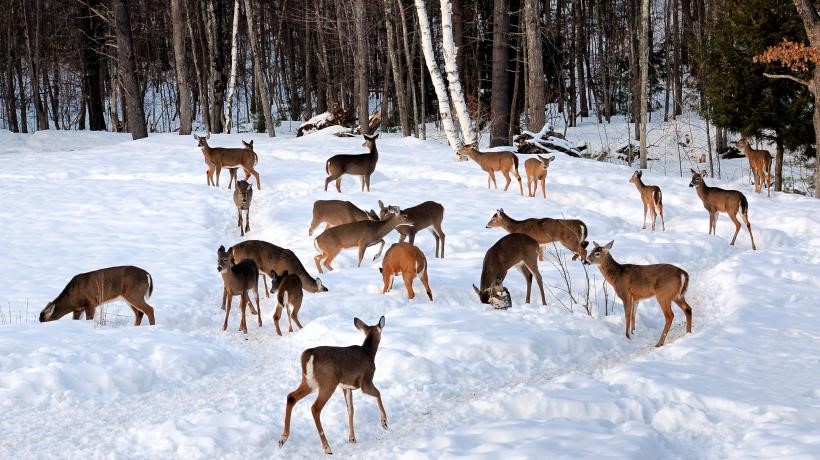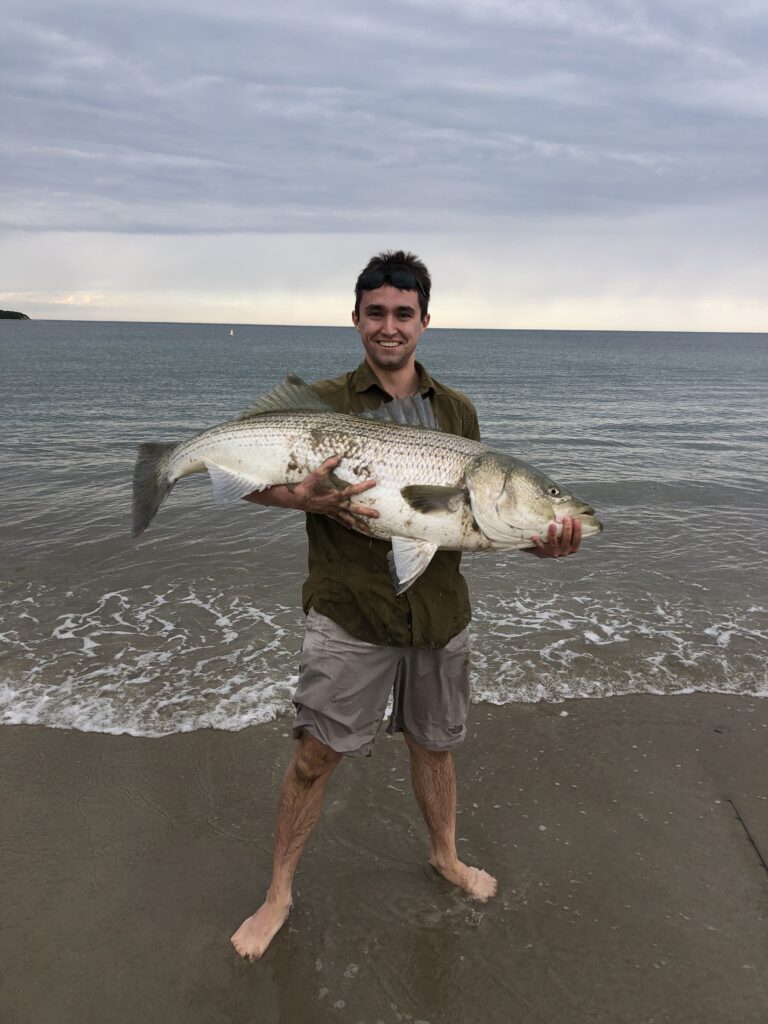Did you get a deer this year? If no, sorry, no venison steaks for you this year. Fortunately, cottontail and snowshoe hare hunting seasons don’t close until February 27. If you can’t dine on venison how about a delicious meal of wild rabbit fricassee. There are a couple of good recipes on the internet.
If you are fortunate to own a beagle or two, they have probably been patiently waiting for deer season to end so that they can get out and do their thing. The late Lambert “Mickey” McGinty of Dalton, when he was president of the Berkshire Beagle Club, once commented that although he loved listening to Johann Strauss’ Radetzky March, he would much rather listen to the sound of a beagle running a rabbit. Now, that’s music to the ears of a rabbit hunter. If you don’t own a beagle, see if you can go rabbit hunting with someone who does. You might be in for a thrill.

Hey, it’s still too early to ice fish. You are not going to hang around the house, are you?
While we are on the subject of rabbits and hares, please know that the NY Department of Environmental Conservation has issued the following warning about Rabbit Hemorrhagic Disease:
“Rabbit Hemorrhagic Disease (RHD) is a fatal virus that affects rabbits and hares. A new strain, RHDV2, was identified in 2010 and recently, jumped to wild rabbits and hares in the southwestern U.S., where it spread to six states within four months. The virus can infect wild rabbits and hares, in addition to domestic rabbits. RHDV2 is extremely hardy, easily transmitted, and highly lethal to rabbits and hares. It does not infect humans or other animals like dogs or cats. RHDV2 spreads easily through direct contact between rabbits or contact with contaminated environments or objects.
The most likely potential routes of introduction are through transported domestic rabbits, internationally imported rabbit products, or people who travel to outbreak areas in the southwest. Here are some ways you can help stop its spread:
- If you are a hiker, camper, or traveler, and you have been to known RHDV2 outbreak areas (CA, NV, UT, CO, TX, AZ and Mexico), disinfect footwear with a 10 percent bleach solution (1 part household bleach, 9 parts water) before going afield here or in surrounding states.
- If you keep domestic rabbits, prevent them from intermingling with other rabbits. If you get new rabbits, quarantine them for two weeks and use separate equipment and clothing to care for them.
- If you are a wildlife rehabilitator who cares for wild rabbits, do not keep domestic rabbits as pets or have contact with domestic rabbits; maintain good disinfection techniques; and change PPE between rabbit litters or individual rabbits.
- If you are a rabbit or hare hunter, avoid contact with domestic rabbits, and do not bring rabbit carcasses killed in other states to New York (or Massachusetts).
- Report any unusual wild rabbit mortalities you encounter to the DEC Wildlife Health Unit at (518) 478-2203 (or MassWildlife).
Read the RHDV2 factsheet (Rabbit Hemorrhagic Disease – Help Prevent this Threat to New York’s Rabbits & Hares (ny.gov) to learn more about how it spreads, ways to prevent it, and what you can do to help.
The American Museum of Fly Fishing, located in Manchester, VT next to the Orvis store has recently announced that its film, Time, made the rounds on the 2020 Fly Fishing Film Tour and is now available to watch for free online. It is an exploration of Lefty Kreh’s legacy among some of the sport’s greatest living legends as they explore the backwaters of inland Florida – one of Lefty’s favorite fishing areas – and discuss how Lefty’s presence influenced their own trajectories in a life of fly fishing. Click onto https://amff.org to see the film.
I doubt there is a fly fisherman who hasn’t heard of Lefty. He was an expert fly fisherman, accomplished photographer, fly casting instructor and an active outdoor writer for more than forty-five years writing for most of the major outdoor magazines. He wrote about 30 flyfishing related books and received many prestigious awards.













